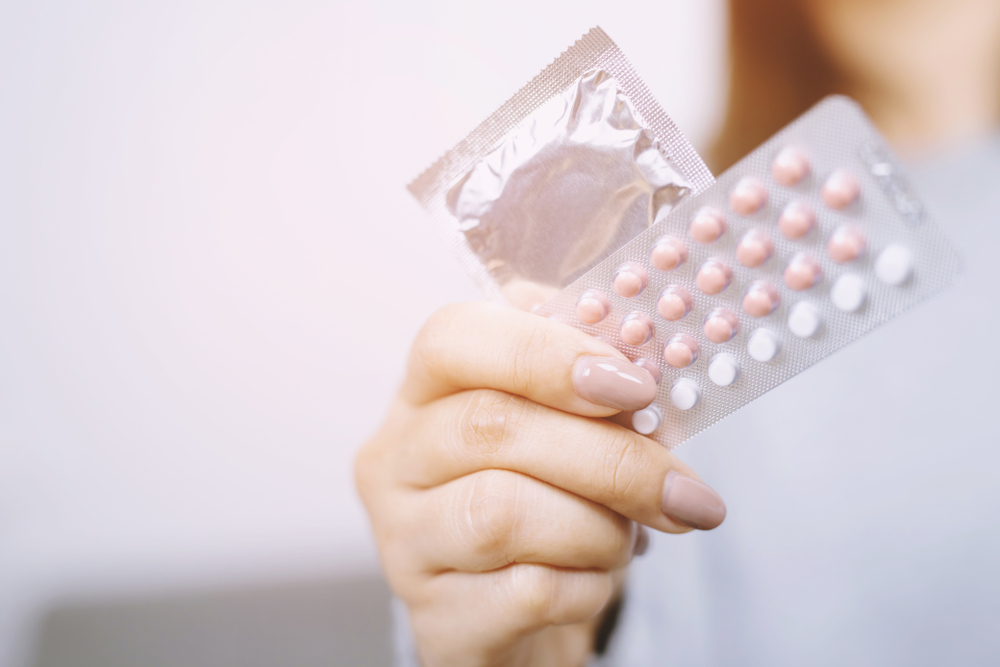The realm of contraceptive methods has evolved, offering a wide range of options to cater to individual preferences and lifestyles. With each method presenting unique advantages and drawbacks, it’s essential to understand them in detail to make an informed decision about your reproductive health.
Barrier Methods
Barrier contraceptives physically obstruct sperm from reaching an egg, thereby preventing fertilization. A few popular barrier methods include:
- Male Condoms: This is a versatile and cost-effective option. They provide protection against unintended pregnancies and safeguard against sexually transmitted infections (STIs) when used correctly.
- Female Condoms: These pouches, typically composed of nitrile or polyurethane, are inserted into the vagina before intercourse. While they may be less effective in preventing pregnancies compared to male condoms, female condoms offer additional STI protection.
- Diaphragms and Cervical Caps: These reusable, dome-shaped devices made of silicone are inserted into the vagina, covering the cervix to prevent sperm from entering the uterus. They should be used in conjunction with spermicide for enhanced effectiveness.
Hormonal Methods
Hormonal contraceptives manipulate the menstrual cycle to prevent pregnancy by inhibiting ovulation or thickening cervical mucus. Some common hormonal methods are:
- Birth Control Pills: Available in combined (estrogen and progestin) and progestin-only formulations, these daily oral contraceptives offer high effectiveness rates when taken consistently. Birth control pills may also alleviate menstrual cramps and regulate periods.
- Contraceptive Patch: This transdermal patch, replaced weekly, releases hormones into the bloodstream. It offers similar benefits and side effects as birth control pills but eliminates the need for daily medication.
- Vaginal Ring: This flexible, hormone-infused ring is inserted into the vagina and replaced monthly. It functions similarly to birth control pills and the contraceptive patch, while also offering a lower daily hormone dose.
- Injections: Administered every three months, contraceptive injections deliver progestin to inhibit ovulation. They are highly effective but may cause irregular bleeding patterns and potential bone density loss with long-term use.
Long-Acting Reversible Contraception (LARC)
LARC methods provide extended contraception without the need for user intervention. Two popular LARC options are:
- Intrauterine Devices (IUDs): A healthcare provider inserts these T-shaped devices into the uterus. Available in hormonal (releases progestin) and non-hormonal (copper) forms, IUDs are highly effective and can last from 3 to 10 years, depending on the type.
- Implants: These small, flexible rods are inserted under the skin of the upper arm and release progestin. They offer contraception for up to three years and have high effectiveness rates.
Emergency Contraception
Emergency contraception offers a means of preventing pregnancy after unprotected intercourse or contraceptive failure. Options include:
- Emergency Contraceptive Pills (ECPs): Available over-the-counter, ECPs containing levonorgestrel or ulipristal acetate can be taken within 72 hours or 120 hours, respectively, after unprotected sex. ECPs are most effective when taken as soon as possible after the incident.
- Copper IUD: Inserted within five days of unprotected intercourse, a copper IUD can serve as an emergency contraceptive, preventing pregnancy with high effectiveness. After insertion, it can continue to provide long-term contraception.
Natural Methods
Natural contraceptive methods rely on tracking fertility patterns to identify and avoid high-fertility days:
- Fertility Awareness-Based Methods (FABMs): These methods involve monitoring menstrual cycles, basal body temperature, and cervical mucus changes to predict fertile days. FABMs require diligent tracking and may be less effective than other contraceptive methods.
- Withdrawal Method: This method involves withdrawing the penis before ejaculation, preventing sperm from entering the vagina. While less effective than a barrier or hormonal methods, it can be used as a backup or in conjunction with other contraceptives.
Choosing a suitable contraceptive method is a highly personal decision based on lifestyle, health considerations, and future family planning goals. Consult with your healthcare provider to discuss your options and determine the most suitable method.
Sources:
- CDC. (2021). Condoms. https://www.cdc.gov/condomeffectiveness/index.html
- Planned Parenthood. (2021). Female Condom. https://www.plannedparenthood.org/learn/birth-control/female-condom
- Mayo Clinic. (2021). Diaphragm and cervical cap. https://www.mayoclinic.org/tests-procedures/diaphragm/about/pac-20384536
- Office on Women’s Health. (2019). Birth control methods. https://www.womenshealth.gov/a-z-topics/birth-control-methods
- Mayo Clinic. (2020). Contraceptive patch. https://www.mayoclinic.org/tests-procedures/contraceptive-patch/about/pac-20384571
- Planned Parenthood. (2021). Birth Control Vaginal Ring (NuvaRing). https://www.plannedparenthood.org/learn/birth-control/birth-control-vaginal-ring-nuvaring
- Office on Women’s Health. (2019). Depo-Provera. https://www.womenshealth.gov/a-z-topics/birth-control-shot
- Mayo Clinic. (2020). Intrauterine device (IUD). https://www.mayoclinic.org/tests-procedures/mirena/about/pac-20391354
- Planned Parenthood. (2021). Birth Control Implant (Nexplanon). https://www.plannedparenthood.org/learn/birth-control/birth-control-implant-nexplanon
- Mayo Clinic. (2021). Tubal ligation. https://www.mayoclinic.org/tests-procedures/tubal-ligation/about/pac-20395133
- Mayo Clinic. (2021). Vasectomy. https://www.mayoclinic.org/tests-procedures/vasectomy/about/pac-20384580
- Office on Women’s Health. (2019). Emergency contraception. https://www.womenshealth.gov/a-z-topics/emergency-contraception
- Planned Parenthood. (2021). IUD as Emergency Contraception. https://www.plannedparenthood.org/learn/morning-after-pill-emergency-contraception/iud-emergency-contraception
- American Pregnancy Association. (2021). Fertility Awareness-Based Methods (FABM). https://americanpregnancy.org/preventing-pregnancy/fertility-awareness-based-methods/
- Planned Parenthood. (2021). Withdrawal (Pull Out Method). https://www.plannedparenthood.org/learn/birth-control/withdrawal-pull-out-method


